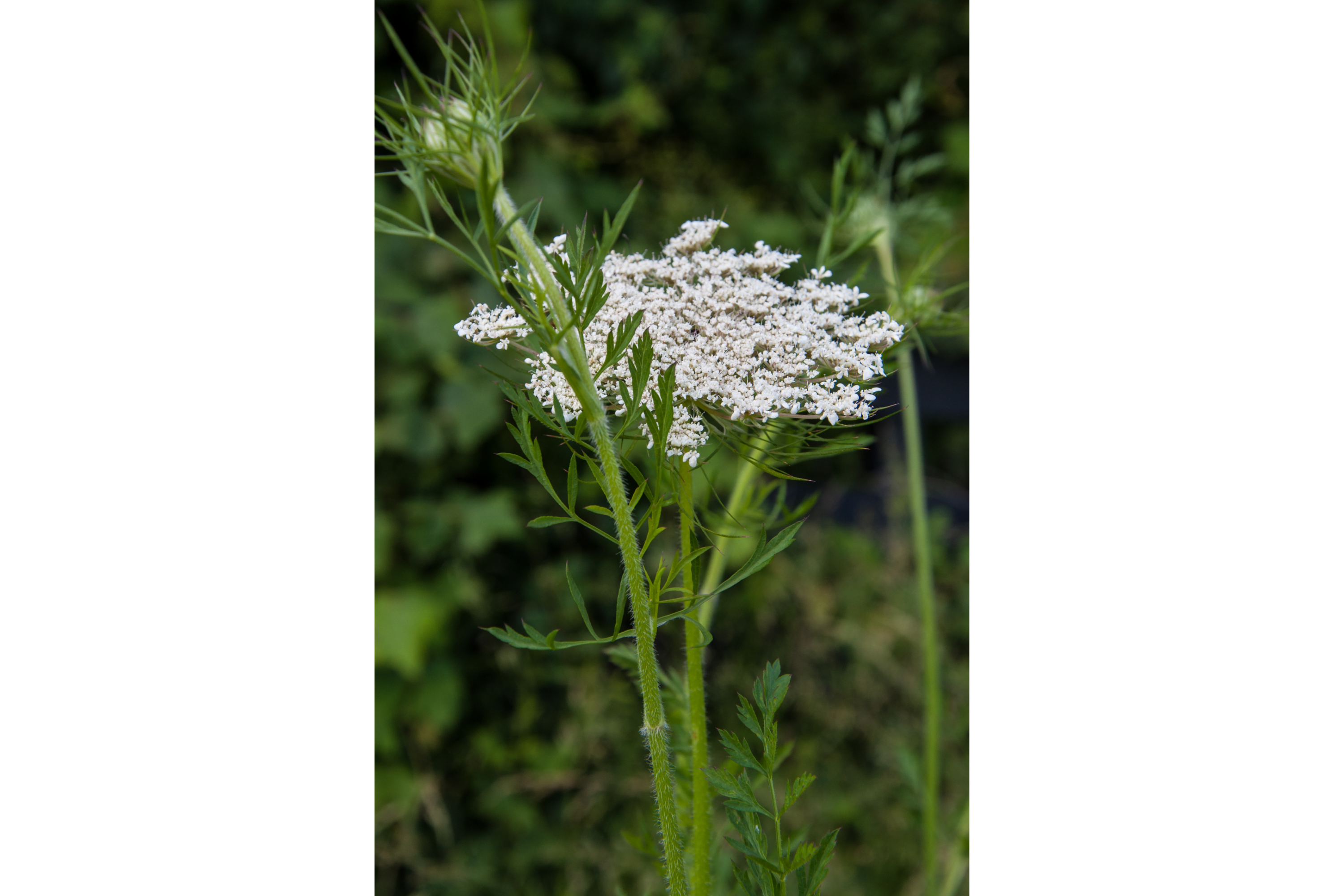Wild carrot
(Daucus carota)

Description
Daucus carota, commonly known as wild carrot or Queen Anne's lace, is a biennial herbaceous plant belonging to the Apiaceae family. The plant is native to Europe, Asia, and North Africa, but it has now naturalized in many other parts of the world, including North and South America, Australia, and New Zealand. Description: The wild carrot is a tall, erect plant that can grow up to 1 meter in height. It has a slender, branched stem that is hairy and grooved, with long, thin leaves that are divided into numerous segments. The plant produces large, flat-topped clusters of white flowers that are 3-5 cm in diameter and have a distinctive dark purple or black central floret. The flowers of the wild carrot are followed by small, oval-shaped fruits that are 4-6 mm long and have long, bristly hairs on their surface. The fruits are known as schizocarps and consist of two dry, indehiscent segments that split apart at maturity to release the seeds. Cultivation: The wild carrot is a hardy plant that prefers well-drained soil and full sun but can also tolerate partial shade. It is a biennial plant, which means that it completes its life cycle in two years. In the first year, the plant produces a rosette of leaves close to the ground, and in the second year, it sends up a flowering stem. The plant is self-fertile and can be propagated by seed. The seeds should be sown in the autumn, either directly in the ground or in seed trays. The seedlings can then be transplanted to their final growing position when they are large enough to handle. Uses: The wild carrot has a long history of use in traditional medicine and culinary arts. The plant is rich in vitamins and minerals, particularly vitamin A, and is a good source of dietary fiber. Medicinal Uses: The roots and seeds of the wild carrot have been used in traditional medicine to treat a range of ailments, including digestive disorders, menstrual problems, and urinary tract infections. The plant is also believed to have diuretic, antiseptic, and anti-inflammatory properties. Culinary Uses: The young leaves and roots of the wild carrot can be eaten raw or cooked and have a sweet, carroty flavor. The flowers can be used to flavor vinegars and are sometimes added to salads for their attractive appearance. Other Uses: The wild carrot is also known for its use in the production of natural dyes. The roots can be boiled to produce a yellow dye, while the flowers can be used to produce a green dye. Toxicity: Although the wild carrot is generally considered safe for human consumption, there are some precautions that should be taken. The plant contains furocoumarins, which can cause skin sensitivity to sunlight and may also cause a skin rash in some people. Conclusion: Daucus carota, or wild carrot, is a versatile and hardy plant that has a long history of use in traditional medicine and culinary arts. The plant is easy to cultivate and can be grown in a range of soil types and climates. While the wild carrot is generally considered safe for human consumption, some precautions should be taken due to the presence of furocoumarins.
Taxonomic tree:







